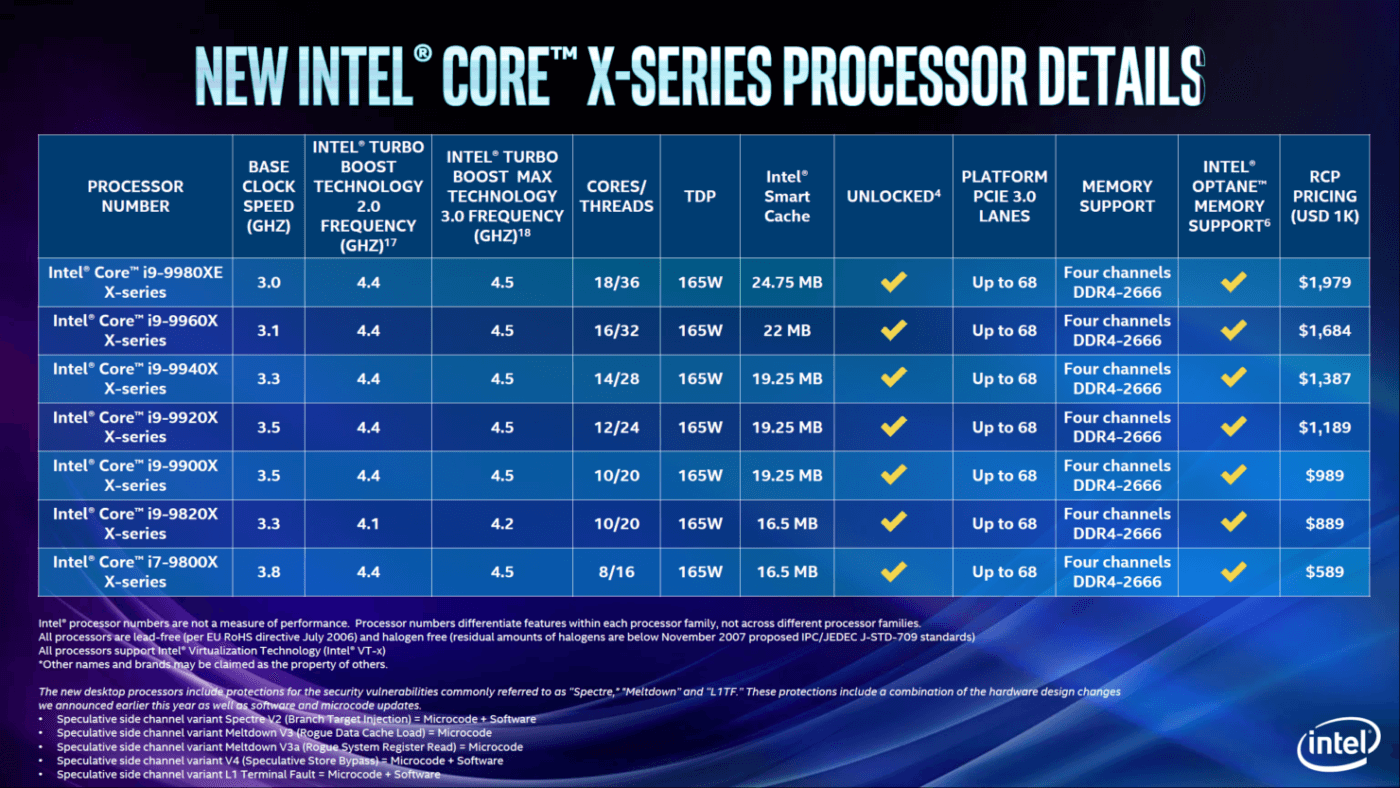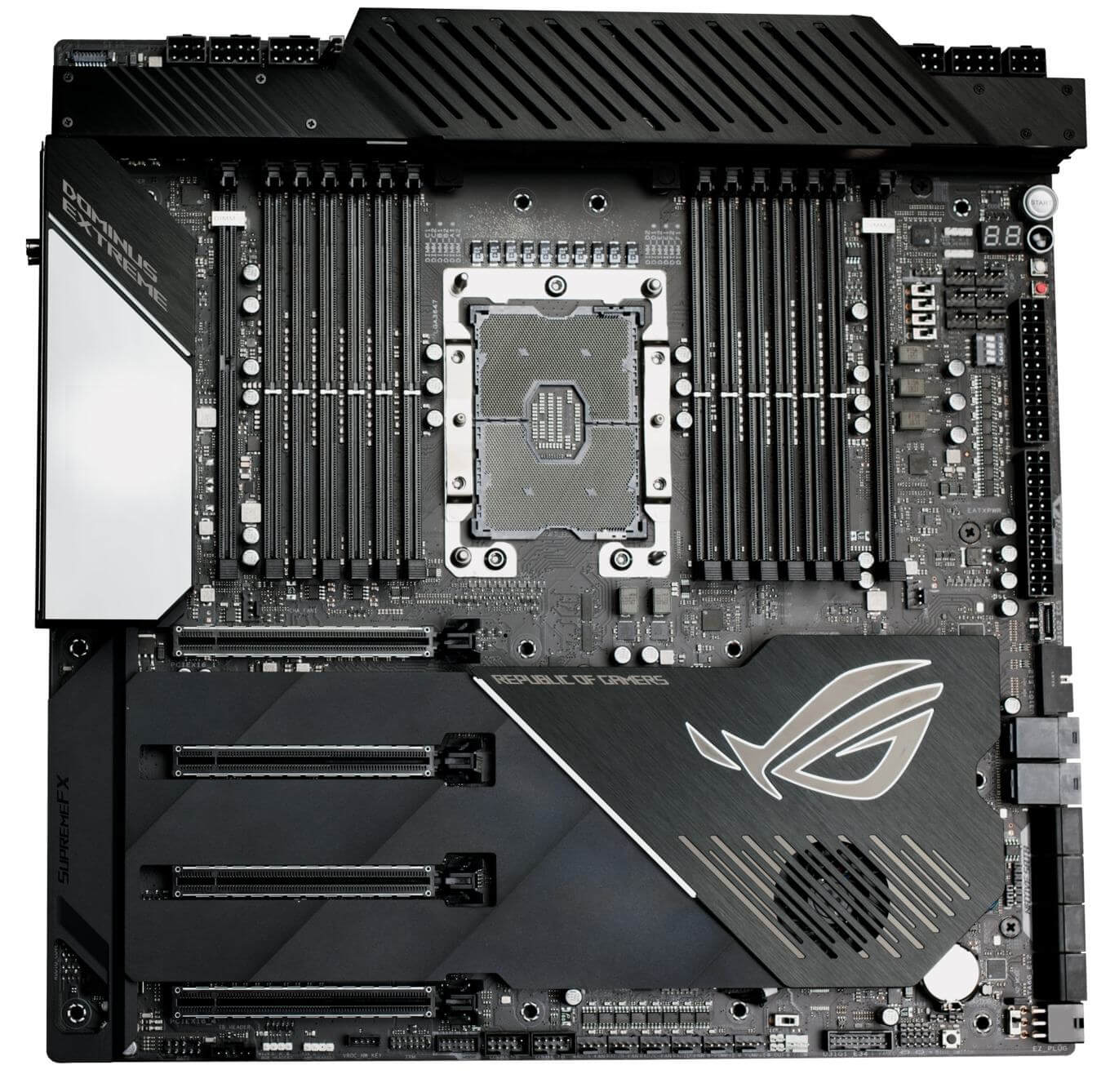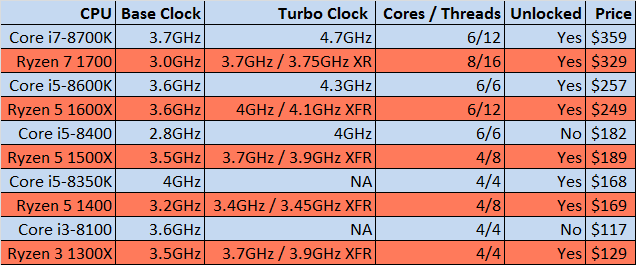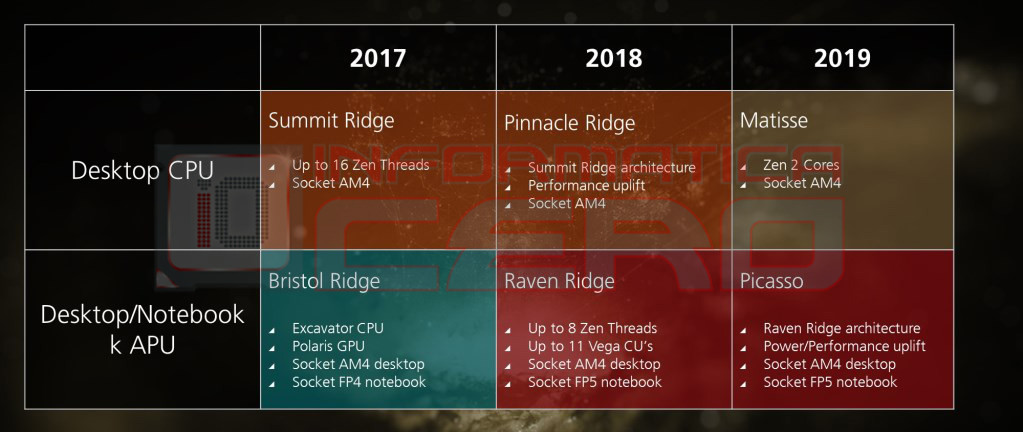Welcome to the all things Coffee Lake & Skylake X Refresh Megathread!!!
This thread will serve as the primary discussion thread for all things regarding Coffee Lake. We’ll be updating as we gain more information.
***
The Coffee Lake Architecture:
Coffee Lake marks the third evolution in Intel’s series of skylake based CPUs. The first was Skylake, Intel’s first x86 architecture based on the 14nm process, Skylake improved several characteristics of previous architectures, including heat generation, power consumption and more IPC, allowing Skylake to be the most efficient and most powerful CPUs on the market during that time.
The next evolution was Kaby Lake; launched in 2016, Kaby Lake was based on a further optimization of the Skylake architecture, namely the 14nm+ process, this enabled Kaby Lake to push clock speeds well beyond the 4.5-4.7GHz barrier that most CPUs couldn’t surpass without noticeable CPU degradation.
Now, we have the latest improvement of the Skylake architecture; Coffee Lake. According to rumors, Coffee Lake is on an optimization known as the 14nm++ process, presumably this is simply another optimization like Kaby Lake to improve CPU clock speeds. Backing up this rumor are several other rumors stating that Core i7 8700K’s are topping out at speeds of 5.3GHz. Of course, we will have to wait for the official reviews of the 8700k to see whether these rumors hold value or not.
What we do know for certain is that Intel is increasing core counts across the board on its new 8th Gen Coffee Lake CPUs. Core i3s are now full quad cores, and Core i5s and I7s are now equipped with 6 cores. This marks the first time we’ve seen a complete core count increase across all CPUs from Intel since the Core 2 series.

**
Quick Refresh on Coffee Lake R:
I know all of you have seen the reviews on the i9 9900K by now, so i'll keep this brief.
(According to wikichip) Coffee Lake R Uses the same exact 14nm++ architecture as the 8th Gen Coffee Lake CPUs, the only differences between the 8th gen and 9th gen SKUs are higher frequencies, more cores for the high end and the addition of a a soldered IHS (for improved thermal dissipation vs. older 8th Gen chips which uses thermal paste between the die and the IHS).
Core i5 9600K:
Cores/Threads: 6/6
Frequency: 3.7GHz (4.6GHz Turbo)
Cache: 9MB
TDP: 95W
MSRP: $263.00
Core i7 9700K:
The 9700K is probably the most surprising CPU out of the three SKUs launched this month, because for the first time ever on a Core i7, we have no hyperthreading. To counter that, the 9700K does have 8 cores instead of 6. But the lack of hyperthreading does hinder the 9700K vs it’s predecessor the 8700K. Both the 9700K and 8700K trade blows in benchmarks.
Cores/Threads: 8/8
Frequency: 3.6GHz (4.9GHz Turbo)
Cache: 12MB
TDP: 95W
MSRP: $385.00
I9 9900K:
Cores/Threads: 8/16
Frequency: 3.6GHz (5.0GHz Turbo)
Cache: 16MB
TDP: 95W
MSRP: $499.00
Intel has also launched the new Z390 chipset for 9th gen processors (however they are still backwards compatible with Z370).
Z390 is incredibly similar to Z370, with only a few things that make up the differences. One is the power delivery, Z390 boards have beefier VRM systems compared to Z370, however it isn't a specification required by Intel (but it is a necessity nonetheless so the 8 core chips don't power throttle). What is a required specification by Intel are the updated connectivity features. USB 3.1 10Gbps is now natively supported and so is built in WiFi capability.
****
Skylake X Refresh & A Unlocked Xeon??:

Unfortunately Intel’s refresh of Skylake-X isn’t looking nearly as good as AMD’s refresh of Threadripper was (which to remind you, included DOUBLING the amount of cores going from 1st to 2nd gen). All we’re getting are slightly higher core frequencies, more cache for the low and midrange SKUs, and no more disabling of PCI-E lanes for low end X299 chips.
The Good News:
[strike]According to AnandTech, the Skylake-X CPUs might be running on the 14nm++ architecture instead of the original 14nm tech used by Skylake (back before Kaby Lake), because the new top tier chips like the 9980XE are running the exact same TDPs as the original Skylake-X chips but with a 400-500mhz bump in their base clocks. [/strike]
Unfortunately, the above, is not true. 9th gen Skylake-X is still running on the same 14nm process as 7th gen.
Cache has also been improved for the 8,10 and 12 core parts. Now the 8 core chips get 16.5MB of L3 cach vs 11MB, 10 core variants get 16.5MB & 19.25MB (more on that later) of L3 vs 13.75MB, and 12 core chips get 19.25MB of L3 vs 16.5MB.
Last but not least, the lowest end SKUs no longer get their PCI-E lanes cut. Every single X299 Skylake-X Refresh SKU now has 44 PCI-E lanes. This is huge as Intel in the past has almost always used PCI-E lanes to differentiate it’s higher and lower end HEDT parts.
The Bad/Odd News:
The biggest loss here is lack of more cores. Skylake-X Refresh has the same amount of cores as Skylake-X. They will now have to fight AMD on even harder turf as the Threadripper 2990WX has 32 cores while the 9980XE is still stuck at 18 cores.
Twin 10 core SKUs: Yep you heard me right, the core i9-9820X and i9-2900X both pack 10 cores and 20 threads each. The difference between the two is very minor, the 2900X has a slightly higher core and boost frequency aswell as slightly higher cache (as mentioned above). The difference in price is $100 between the two.
The Six Core HEDT SKU is gone. I think it’s pretty obvious why Intel no longer has a six core part for the X299 platform, given that 8 cores on the mainstream exist and six cores has now gone down to the Core i5 only.
Core i7 STILL on HEDT: For some inexplicable reason, Intel has still given its lowest HEDT SKU the name of a core i7 (the i7-9800X). When core i9 exists on the mainstream, i have no clue as to why you would put a core i7 name on HEDT.
https://www.anandtech.com/show/13402/intel-basin-falls-refresh-core-i9-9980xe
Xeon W-3175X:

You thought those twin 10 core chips were weird, or the fact that a core i7 is on HEDT and core i9 on mainstream is strange? Well this is the strangest of them all, an overclockable Xeon
According to Techspot, this beast of a chip is a 28 core 48 thread behemoth based on the Cascade Lake architecture which is Intel’s latest ultra high end Xeon architecture. The W-3175X
is basically an unlocked variant of the Xeon 8120 server processor.
Rumored Specs by WikiChip here: https://en.wikichip.org/wiki/intel/xeon_w/w-3175x
This CPU will require new motherboards aswell, one of them is the absolutely insane Asus ROG Dominus Extreme. Features TWELVE memory slots, twin 24 pin power connectors and a host of other features.
https://www.techspot.com/news/76855-our-take-intel-newly-announced-skylake-x-refresh.html

*
Thanks for reading! Let us know your thoughts below!
This thread will serve as the primary discussion thread for all things regarding Coffee Lake. We’ll be updating as we gain more information.
***
The Coffee Lake Architecture:
Coffee Lake marks the third evolution in Intel’s series of skylake based CPUs. The first was Skylake, Intel’s first x86 architecture based on the 14nm process, Skylake improved several characteristics of previous architectures, including heat generation, power consumption and more IPC, allowing Skylake to be the most efficient and most powerful CPUs on the market during that time.
The next evolution was Kaby Lake; launched in 2016, Kaby Lake was based on a further optimization of the Skylake architecture, namely the 14nm+ process, this enabled Kaby Lake to push clock speeds well beyond the 4.5-4.7GHz barrier that most CPUs couldn’t surpass without noticeable CPU degradation.
Now, we have the latest improvement of the Skylake architecture; Coffee Lake. According to rumors, Coffee Lake is on an optimization known as the 14nm++ process, presumably this is simply another optimization like Kaby Lake to improve CPU clock speeds. Backing up this rumor are several other rumors stating that Core i7 8700K’s are topping out at speeds of 5.3GHz. Of course, we will have to wait for the official reviews of the 8700k to see whether these rumors hold value or not.
What we do know for certain is that Intel is increasing core counts across the board on its new 8th Gen Coffee Lake CPUs. Core i3s are now full quad cores, and Core i5s and I7s are now equipped with 6 cores. This marks the first time we’ve seen a complete core count increase across all CPUs from Intel since the Core 2 series.
****
What this Means for Ryzen:
Fortunately for AMD, Ryzen still has a thread count advantage over Intel, this alone still makes most Ryzen chips very competitive against Coffee Lake. What we should see according to specs alone is more of a tie between Ryzen and Coffee Lake when it comes to multithreaded applications and multitasking.
Gaming wise, Intel will still take the lead as Intel apparently is still using the Ring Bus architecture for their 8th Gen. CPUs versus Intel’s new Mesh architecture which is implemented in Skylake-X. This means that core-to-core latency will be almost as fast as Kaby Lake, so gaming performance will not be hindered compared to AMD’s Infinity Fabric which generally has higher latencies due to cores needing to communicate across CCX’s.
What this Means for Skylake-X & Kaby Lake-X:
Not everything is fine and dandy for Intel, with Coffee Lake they face major cannibalization issues between their mainstream and HEDT platforms. Specifically I am talking about Kaby Lake-X, the Core i5 7640X and Core i7 7740X which are on the X299 platform but cannot take advantage of any of X299s main features like quad channel memory support and high amounts of PCI-E lanes. Lets take a look at the specs:
Core i7-7800K
Cores = 6/8
Cache = 12MB
IMC = Dual Channel
PCIE Lanes = 16
Z370 Motherboards = Low Cost to Entry
Core i7-7740X
Cores = 4/8
Cache = 8MB
IMC = Dual Channel
PCIE Lanes = 16
X299 Motherboards = Expensive to Entry (Average price for X299 motherboards are around $300)
The only place the 7740X wins is in it’s base clock of 4.3ghz, but even then it’s negligible since the 8700K has a 4.7GHz boost clock while the 7740X only has a boost clock of 4.5GHz.
So as you can see, Kaby Lake-X is completely dead after just several months from launch.
Skylake-X could also take some hits but shouldn’t be as severe as Kaby Lake-X. The Core i7-7800X will most likely get punished by the 8700K as it has an identical core count to the 8700k, granted it does have quad channel memory support and has more PCI-E lanes than Coffee Lake CPUs, but it share a very similar latency deficit like Ryzen due to Intel’s new Mesh architecture. So if you're a gamer and a content creator, the 8700K most likely will be no brainer. Only those who need the extra PCI-E lanes and quad channel memory will buy the 7800X over the 8700k.
We could also see the 7820X Octo Core CPU being eaten by the 8700K in the market if the 8700K’s higher clock speeds can make up enough performance for the price vs the 7820X. But we will have to wait for the benchmarks to see what will become of Skylake-X.
What this Means for Ryzen:
Fortunately for AMD, Ryzen still has a thread count advantage over Intel, this alone still makes most Ryzen chips very competitive against Coffee Lake. What we should see according to specs alone is more of a tie between Ryzen and Coffee Lake when it comes to multithreaded applications and multitasking.
Gaming wise, Intel will still take the lead as Intel apparently is still using the Ring Bus architecture for their 8th Gen. CPUs versus Intel’s new Mesh architecture which is implemented in Skylake-X. This means that core-to-core latency will be almost as fast as Kaby Lake, so gaming performance will not be hindered compared to AMD’s Infinity Fabric which generally has higher latencies due to cores needing to communicate across CCX’s.
What this Means for Skylake-X & Kaby Lake-X:
Not everything is fine and dandy for Intel, with Coffee Lake they face major cannibalization issues between their mainstream and HEDT platforms. Specifically I am talking about Kaby Lake-X, the Core i5 7640X and Core i7 7740X which are on the X299 platform but cannot take advantage of any of X299s main features like quad channel memory support and high amounts of PCI-E lanes. Lets take a look at the specs:
Core i7-7800K
Cores = 6/8
Cache = 12MB
IMC = Dual Channel
PCIE Lanes = 16
Z370 Motherboards = Low Cost to Entry
Core i7-7740X
Cores = 4/8
Cache = 8MB
IMC = Dual Channel
PCIE Lanes = 16
X299 Motherboards = Expensive to Entry (Average price for X299 motherboards are around $300)
The only place the 7740X wins is in it’s base clock of 4.3ghz, but even then it’s negligible since the 8700K has a 4.7GHz boost clock while the 7740X only has a boost clock of 4.5GHz.
So as you can see, Kaby Lake-X is completely dead after just several months from launch.
Skylake-X could also take some hits but shouldn’t be as severe as Kaby Lake-X. The Core i7-7800X will most likely get punished by the 8700K as it has an identical core count to the 8700k, granted it does have quad channel memory support and has more PCI-E lanes than Coffee Lake CPUs, but it share a very similar latency deficit like Ryzen due to Intel’s new Mesh architecture. So if you're a gamer and a content creator, the 8700K most likely will be no brainer. Only those who need the extra PCI-E lanes and quad channel memory will buy the 7800X over the 8700k.
We could also see the 7820X Octo Core CPU being eaten by the 8700K in the market if the 8700K’s higher clock speeds can make up enough performance for the price vs the 7820X. But we will have to wait for the benchmarks to see what will become of Skylake-X.
**
Quick Refresh on Coffee Lake R:
I know all of you have seen the reviews on the i9 9900K by now, so i'll keep this brief.
(According to wikichip) Coffee Lake R Uses the same exact 14nm++ architecture as the 8th Gen Coffee Lake CPUs, the only differences between the 8th gen and 9th gen SKUs are higher frequencies, more cores for the high end and the addition of a a soldered IHS (for improved thermal dissipation vs. older 8th Gen chips which uses thermal paste between the die and the IHS).
Core i5 9600K:
Cores/Threads: 6/6
Frequency: 3.7GHz (4.6GHz Turbo)
Cache: 9MB
TDP: 95W
MSRP: $263.00
Core i7 9700K:
The 9700K is probably the most surprising CPU out of the three SKUs launched this month, because for the first time ever on a Core i7, we have no hyperthreading. To counter that, the 9700K does have 8 cores instead of 6. But the lack of hyperthreading does hinder the 9700K vs it’s predecessor the 8700K. Both the 9700K and 8700K trade blows in benchmarks.
Cores/Threads: 8/8
Frequency: 3.6GHz (4.9GHz Turbo)
Cache: 12MB
TDP: 95W
MSRP: $385.00
I9 9900K:
Cores/Threads: 8/16
Frequency: 3.6GHz (5.0GHz Turbo)
Cache: 16MB
TDP: 95W
MSRP: $499.00
Intel has also launched the new Z390 chipset for 9th gen processors (however they are still backwards compatible with Z370).
Z390 is incredibly similar to Z370, with only a few things that make up the differences. One is the power delivery, Z390 boards have beefier VRM systems compared to Z370, however it isn't a specification required by Intel (but it is a necessity nonetheless so the 8 core chips don't power throttle). What is a required specification by Intel are the updated connectivity features. USB 3.1 10Gbps is now natively supported and so is built in WiFi capability.
****
Skylake X Refresh & A Unlocked Xeon??:

Unfortunately Intel’s refresh of Skylake-X isn’t looking nearly as good as AMD’s refresh of Threadripper was (which to remind you, included DOUBLING the amount of cores going from 1st to 2nd gen). All we’re getting are slightly higher core frequencies, more cache for the low and midrange SKUs, and no more disabling of PCI-E lanes for low end X299 chips.
The Good News:
[strike]According to AnandTech, the Skylake-X CPUs might be running on the 14nm++ architecture instead of the original 14nm tech used by Skylake (back before Kaby Lake), because the new top tier chips like the 9980XE are running the exact same TDPs as the original Skylake-X chips but with a 400-500mhz bump in their base clocks. [/strike]
Unfortunately, the above, is not true. 9th gen Skylake-X is still running on the same 14nm process as 7th gen.
Cache has also been improved for the 8,10 and 12 core parts. Now the 8 core chips get 16.5MB of L3 cach vs 11MB, 10 core variants get 16.5MB & 19.25MB (more on that later) of L3 vs 13.75MB, and 12 core chips get 19.25MB of L3 vs 16.5MB.
Last but not least, the lowest end SKUs no longer get their PCI-E lanes cut. Every single X299 Skylake-X Refresh SKU now has 44 PCI-E lanes. This is huge as Intel in the past has almost always used PCI-E lanes to differentiate it’s higher and lower end HEDT parts.
The Bad/Odd News:
The biggest loss here is lack of more cores. Skylake-X Refresh has the same amount of cores as Skylake-X. They will now have to fight AMD on even harder turf as the Threadripper 2990WX has 32 cores while the 9980XE is still stuck at 18 cores.
Twin 10 core SKUs: Yep you heard me right, the core i9-9820X and i9-2900X both pack 10 cores and 20 threads each. The difference between the two is very minor, the 2900X has a slightly higher core and boost frequency aswell as slightly higher cache (as mentioned above). The difference in price is $100 between the two.
The Six Core HEDT SKU is gone. I think it’s pretty obvious why Intel no longer has a six core part for the X299 platform, given that 8 cores on the mainstream exist and six cores has now gone down to the Core i5 only.
Core i7 STILL on HEDT: For some inexplicable reason, Intel has still given its lowest HEDT SKU the name of a core i7 (the i7-9800X). When core i9 exists on the mainstream, i have no clue as to why you would put a core i7 name on HEDT.
https://www.anandtech.com/show/13402/intel-basin-falls-refresh-core-i9-9980xe
Xeon W-3175X:

You thought those twin 10 core chips were weird, or the fact that a core i7 is on HEDT and core i9 on mainstream is strange? Well this is the strangest of them all, an overclockable Xeon
According to Techspot, this beast of a chip is a 28 core 48 thread behemoth based on the Cascade Lake architecture which is Intel’s latest ultra high end Xeon architecture. The W-3175X
is basically an unlocked variant of the Xeon 8120 server processor.
Rumored Specs by WikiChip here: https://en.wikichip.org/wiki/intel/xeon_w/w-3175x
This CPU will require new motherboards aswell, one of them is the absolutely insane Asus ROG Dominus Extreme. Features TWELVE memory slots, twin 24 pin power connectors and a host of other features.
https://www.techspot.com/news/76855-our-take-intel-newly-announced-skylake-x-refresh.html

*
Thanks for reading! Let us know your thoughts below!






